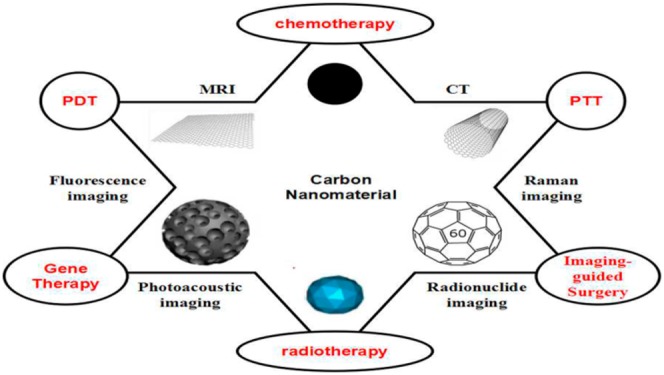- Record: found
- Abstract: found
- Article: not found
Multifunctional Carbon-Based Nanomaterials: Applications in Biomolecular Imaging and Therapy

Read this article at
Abstract

Molecular imaging has been widely used not only as an important detection technology in the field of medical imaging for cancer diagnosis but also as a theranostic approach for cancer in recent years. Multifunctional carbon-based nanomaterials (MCBNs), characterized by unparalleled optical, electronic, and thermal properties, have attracted increasing interest and demonstrably hold the greatest promise in biomolecular imaging and therapy. As such, it should come as no surprise that MCBNs have already revealed a great deal of potential applications in biomedical areas, such as bioimaging, drug delivery, and tumor therapy. Carbon nanomaterials can be categorized as graphene, single-walled carbon nanotubes, mesoporous carbon, nanodiamonds, fullerenes, or carbon dots on the basis of their morphologies. In this article, reports of the use of MCBNs in various chemical conjugation/functionalization strategies, focusing on their applications in cancer molecular imaging and imaging-guided therapy, will be comprehensively summarized. MCBNs show the possibility to serve as optimal candidates for precise cancer biotheranostics.
Related collections
Most cited references166
- Record: found
- Abstract: found
- Article: not found
Mesoporous silica nanoparticles: synthesis, biocompatibility and drug delivery.
- Record: found
- Abstract: not found
- Article: not found
Enhancement and Quenching of Single-Molecule Fluorescence
- Record: found
- Abstract: not found
- Article: not found
